The museums in Mulhouse are so famous that they attract visitors from all over France and Europe. Their fame has even spread to the far corners of the world. For this reason, an Australian friend visiting Paris was determined to travel by train to visit the automobile museum!
While Strasbourg dares to use the superlative "Christmas Capital", Mulhouse has nothing to be ashamed of when it is dubbed "European Capital of Technical Museums". For if a place like Speyer or Sinsheim (Germany) can boast of having a large technical museum, Mulhouse is an exception. There are not just one or two technical museums in Mulhouse... but five!
In this article, I suggest you discover the most exciting museums in Mulhouse!

A general view of Mulhouse © French Moments
The Museums in Mulhouse
There are several types of museums in Mulhouse.
There are, of course, the five major "technical" museums (automobile, train, electricity, printed textiles, wallpaper) and a few cultural sites that are not to be missed (historical museum, botanical and zoological park, fine arts museum, Ecomusée of Alsace, etc).
If you want to discover them all during your stay, you will need at least three full days (for a suggestion of accommodation, click here).
Here is the list of museums and cultural sites in the Mulhouse region. Let's start with the technical museums of Mulhouse!
Automobile museum
The National Automobile Museum (musée national de l'Automobile) houses the famous Schlumpf collection. Fritz Schlumpf was an industrialist from Mulhouse with a passion for prestigious European cars. He and his brother acquired many Bugattis and classic cars.

The entrance of the Musée National de l'Automobile © French Moments
According to the museum's website, it houses the largest car collection in the world with more than 500 vehicles on 17,000 m2!
Today, the aim of the collection is to show the evolution of the automobile industry. The vehicles on display come from various car manufacturers that have considerably revolutionised our way of life.
The 560 restored vehicles are displayed in three hangars decorated in a Belle Époque atmosphere, with 500 replicas of candelabras from the Pont Alexandre-III in Paris separating the Rolls Royce, Bugatti and cars from 96 other makes.
Rolls-Royce and Bugatti
In particular, the museum houses an important collection of Rolls Royces, and the largest collection of Bugattis in the world (Schlumpf collection).
Other brands include the pioneers of the automobile (1878 to 1918) with Panhard & Levassor, Peugeot, De Dion-Bouton, Benz & Cie, Porsche, 123 Bugattis (including 3 Bugatti Royales), Rolls-Royce, Maserati, Ferrari, Mercedes, Hispano-Suiza, Delahaye, Renault, Citroën...
Finally, the museum organises temporary exhibitions that are popular with visitors. From 9 July 2020 to 10 January 2021, "Pop Lamborghini" honoured the Italian manufacturer and its flagship models, signed by the greatest names in bodywork and design.
![Collection Schlumpf Mulhouse © Dontpanic - licence [CC BY-SA 3.0] from Wikimedia Commons La collection Schlumpf, Cité de l'Automobile à Mulhouse © Dontpanic - licence [CC BY-SA 3.0] from Wikimedia Commons](https://frenchmoments.eu/wp-content/uploads/2022/11/Collection-Schlumpf-Mulhouse-©-Dontpanic-licence-CC-BY-SA-3.0-from-Wikimedia-Commons.jpg)
The Schlumpf collection, Cité de l'Automobile in Mulhouse © Dontpanic - licence [CC BY-SA 3.0] from Wikimedia Commons

Vintage cars from the early 20th century © French Moments

At the Musée National de l'Automobile © French Moments

At the Musée National de l'Automobile © French Moments
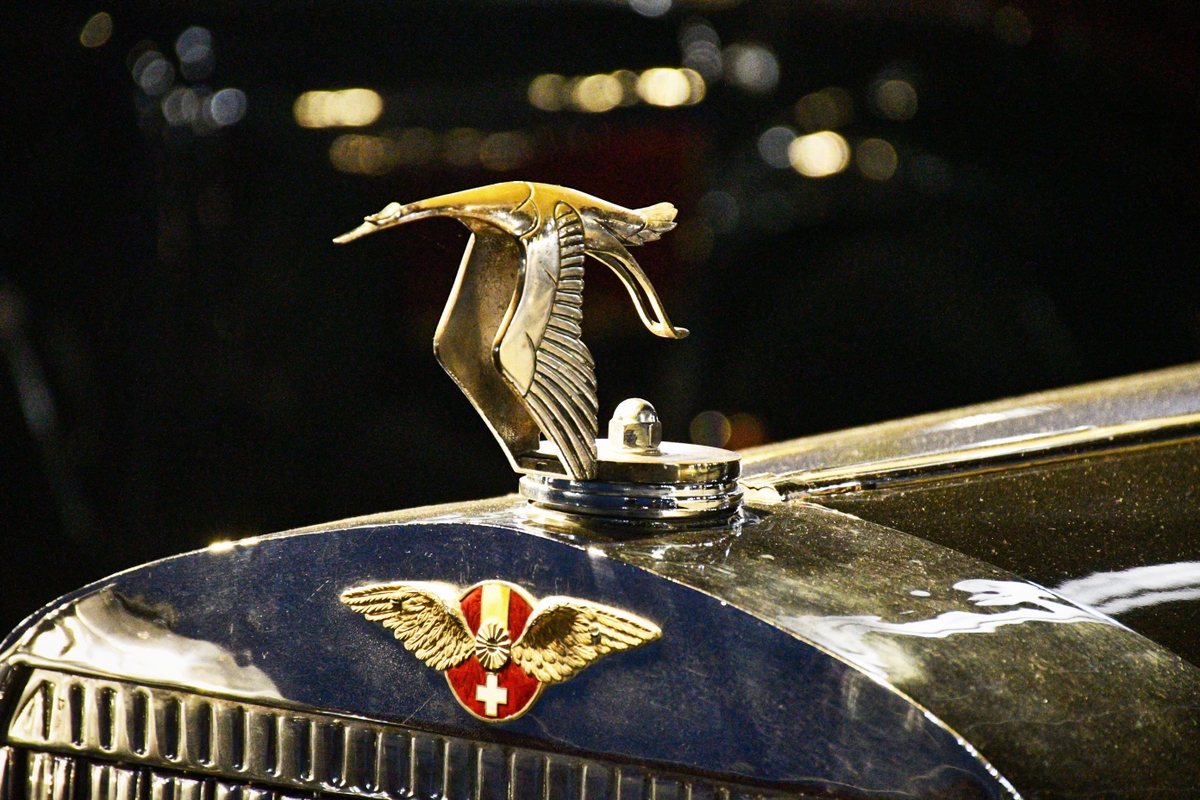
A radiator cap © French Moments

Museums in Mulhouse: the Cité de l'Automobile © French Moments

Sports cars © French Moments

A bright red car! © French Moments
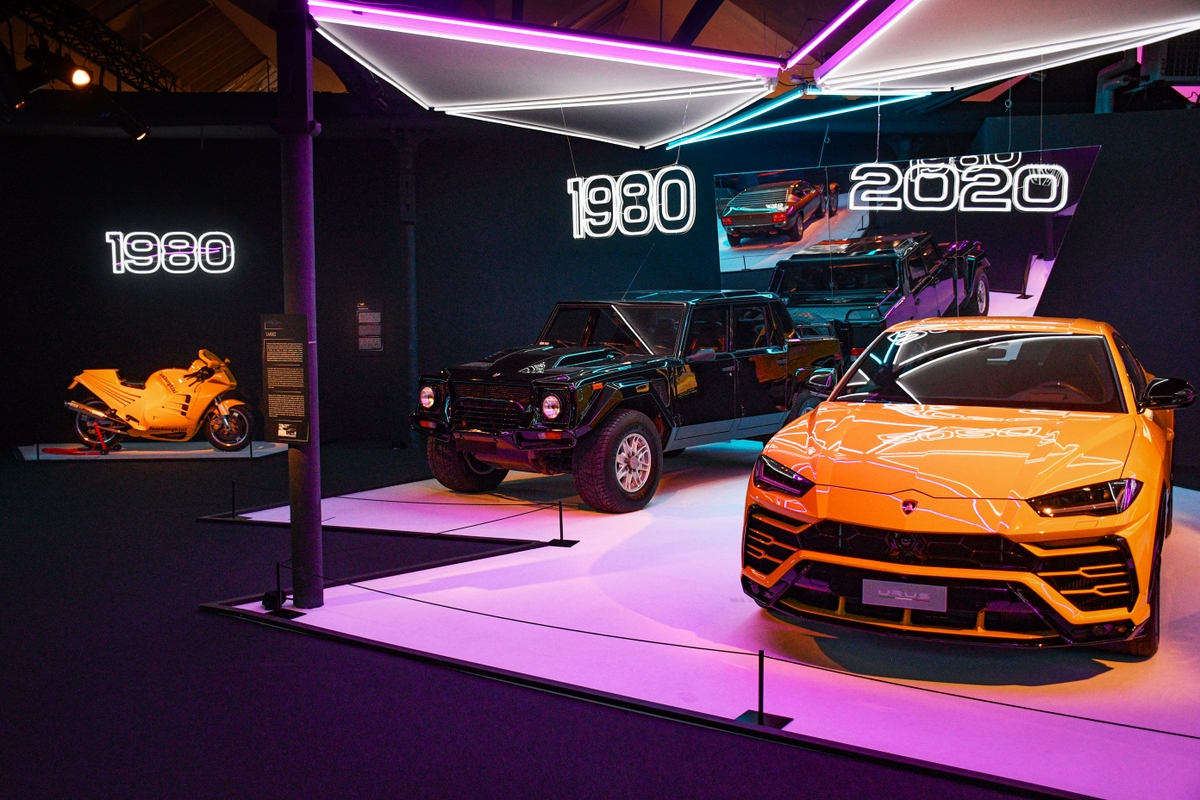
The temporary exhibition "Pop Lamborghini" in 2020 © French Moments
► Find out more: Official website of the Automobile Museum
Train museum
The Train museum (Cité du Train) is the largest railway museum in Europe! It houses a collection of more than a hundred railway engines and vehicles on 60,000 m2.

The entrance of the Cité du Train © French Moments
This "railway journey" is dedicated to the preservation of the main pieces of the SNCF's historical heritage, from the beginnings of the railway in the 19th century to the TGV of the 21st century. (The SNCF is the national train operator in France).
You can learn about the impact the railway has had on the daily life of the French people.
This museum will delight young and old alike in two superbly laid-out exhibition areas. As you discover the museum, a sound and light show immerses you in the atmosphere of the past.
A discovery in 6 themes
The golden age of the railway is presented through 6 themes: the railway and holidays, the railway and the mountains, official trains, the railway and the war, railwaymen and the world of travel.

Cité du Train, Mulhouse © French Moments

Visit of the Cité du Train © French Moments

At Mulhouse Station! © French Moments

Inside the Cité du Train © French Moments

A visit to the Cité du Train © French Moments

The luxurious interior of a carriage © French Moments

Steam locomotive © French Moments

In the Cité du Train © French Moments

The mini-train of the Cité du Train © French Moments

The "orange" TGV Sud-Méditerranée © French Moments
► Find out more: Official website of the Cité du train
Electropolis
The Electropolis Museum in Mulhouse is a fascinating museum that honours the Electricity Fairy. Located opposite the Cité du Train, the museum retraces the history of electricity from antiquity to the present day in an interactive and fascinating way.
With an exhibition area of 4,000 m2, Electropolis is the largest museum in Europe dedicated to the history of electricity and household appliances. It has been awarded the title of Musée de France and contains more than 12,000 objects, of which more than a thousand are on public display. You can admire a collection of historical objects and inventions by Benjamin Franklin, André-Marie Ampère, Alessandro Volta, Samuel Morse, Alexander Graham Bell, Nikola Tesla, Thomas Edison and Guglielmo Marconi.
Finally, the museum offers a range of activities, public experiments, educational discovery workshops, and a 2-hectare technology garden that will open in 2021.
12,000 objects!
The Electropolis Museum's collections include more than 12,000 objects, of which a thousand are on permanent display.

Musée EDF Electropolis © Xavier POPY

An interactive museum: Musée EDF Electropolis © Xavier POPY

Musée EDF Electropolis © Xavier POPY
![Electropolis Mulhouse © Arnaud 25 - licence [CC BY-SA 3.0] from Wikimedia Commons Musée Electropolis, Mulhouse © Arnaud 25 - licence [CC BY-SA 3.0] from Wikimedia Commons](https://frenchmoments.eu/wp-content/uploads/2022/11/Electropolis-Mulhouse-©-Arnaud-25-licence-CC-BY-SA-3.0-from-Wikimedia-Commons.jpg)
Musée Electropolis, Mulhouse © Arnaud 25 - licence [CC BY-SA 3.0] from Wikimedia Commons
► Find out more: Official website of Electropolis
Printed textiles museum
In the railway station district, the Printed Textiles Museum (Musée de l'Impression sur Etoffes) reveals to visitors the incredible destiny of Mulhouse's fabrics. The history of textile printing in Mulhouse, manufacturing secrets and an exhibition of the famous indiennes will leave you in no doubt about the subject!

Le bâtiment du Musée de l'Impression sur Etoffes © French Moments
The museum is at the same time a decorative art museum, a technical museum, a local history museum and a fashion museum.
Its vocation is to make textile printing known by relying on the collections of samples, materials and documents gathered by the Société industrielle de Mulhouse (SIM).
An exhibition on 3 levels
The presentation of the history of printed fabrics is organised on three levels:
- the vogue for "indiennes
- printed fabrics in the 18th century
- printed fabrics in the 19th century
- textile prints in the 20th century
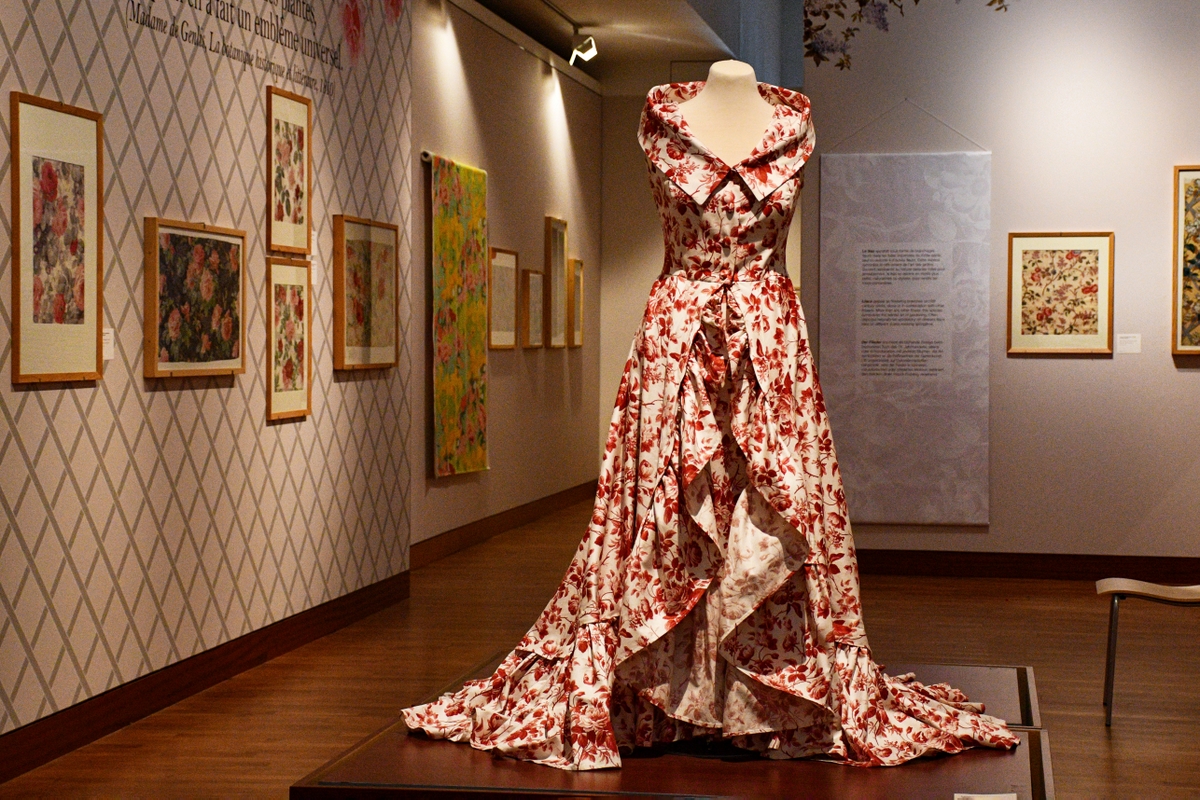
In the musée de l'impression sur étoffes, Mulhouse © French Moments

The musée de l'impression sur étoffes of Mulhouse © French Moments

One of the exhibition rooms of the Musée de l'Impression sur Etoffes © French Moments

Christmas fabric 2018 at the fabric shop in Mulhouse © French Moments

Explanatory panel of the Musée de l'Impression sur Etoffes © French Moments
► Find out more: Official website of the Musée de l'impression sur étoffes
Wallpaper museum
The Wallpaper museum (musée du papier peint) is unique in France. It is located in Rixheim, in the suburbs of Mulhouse. No, these are not ordinary wallpapers that you will use to line Baby's room... but collections that were much sought after and exported all over the world (it seems that the White House has some!)
![Rixheim Musée du Papier Peint © Ji-Elle - licence [CC BY-SA 3.0] from Wikimedia Commons Musée du Papier Peint à Rixheim © Ji-Elle - licence [CC BY-SA 3.0] from Wikimedia Commons](https://frenchmoments.eu/wp-content/uploads/2022/11/Rixheim-Musée-du-Papier-Peint-©-Ji-Elle-licence-CC-BY-SA-3.0-from-Wikimedia-Commons-scaled-1.jpg)
The Musée du Papier Peint in Rixheim © Ji-Elle - licence [CC BY-SA 3.0] from Wikimedia Commons
The building of the former Commandery of the Teutonic Knights now houses the Rixheim town hall (central building), the Zuber factory (left wing) and the wallpaper museum (right wing).
The permanent tour of the museum includes a room where the manufacturing techniques are exhibited, as well as eight panoramic views of the Zuber factory in Rixheim.
2 exhibition floors
The technical room presents the different stages in the manufacture of wallpaper: the production of paper, the colour, the fusing, the printing on the plate, the machines used to print the paper with a relief roller or in intaglio, to emboss it or to flock it. The museum also presents modern printing techniques: silk-screen printing, rotogravure printing, flexography and digital printing.
On the second floor are eight panoramic wallpapers from the Zuber factory in Rixheim. They transport visitors to far-off lands, exotic landscapes and idyllic gardens that invite them to dream. They include historiated scenes (Greek War of Independence), or views of exotic countries (India, Brazil, North America). From the 1840s onwards, the human figure disappeared in favour of paradisiacal views of different parts of the world (Eldorado, the Land Zones).

Inside the musée du Papier Peint © OTC de Mulhouse et sa région
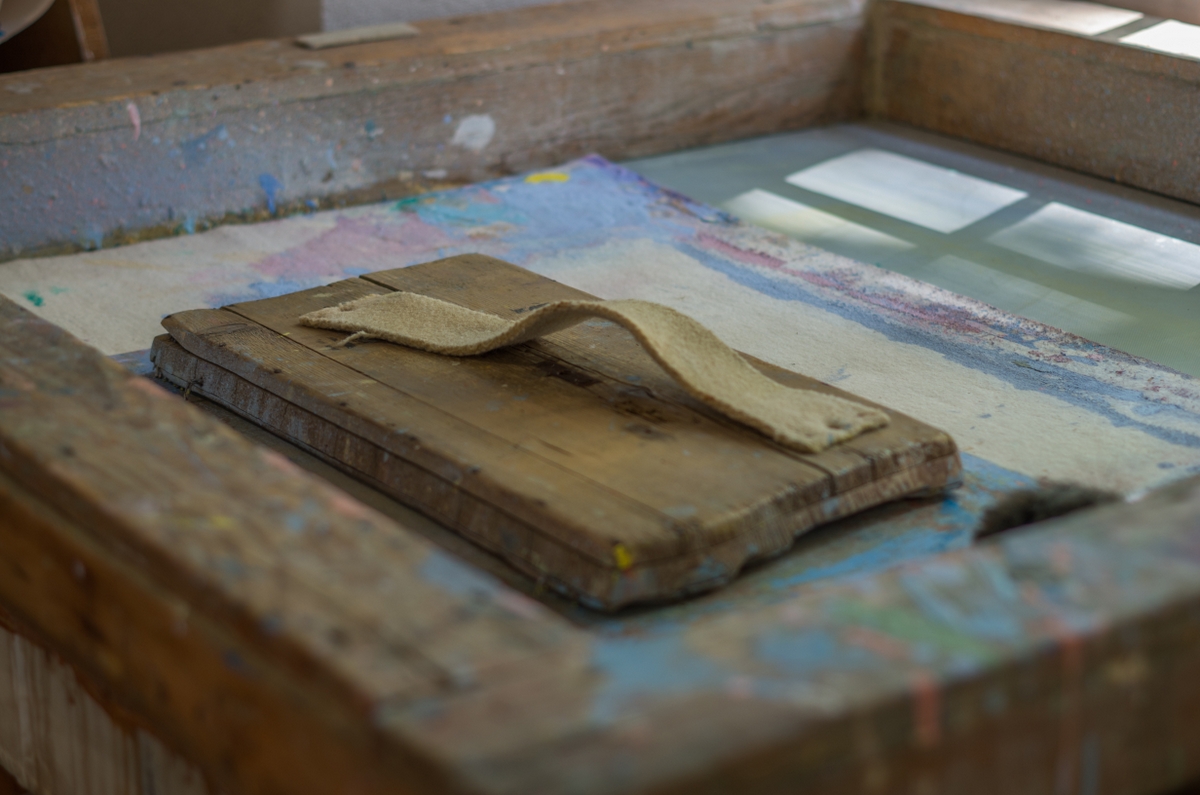
Musée du Papier Peint © OTC de Mulhouse et sa région
► Find out more: Official website of the musée du papier-peint
Historical museum
The Place de la Réunion is bordered by the beautiful Renaissance building of the former Hôtel de Ville, with its facades painted with trompe-l'oeil decorations (1552).
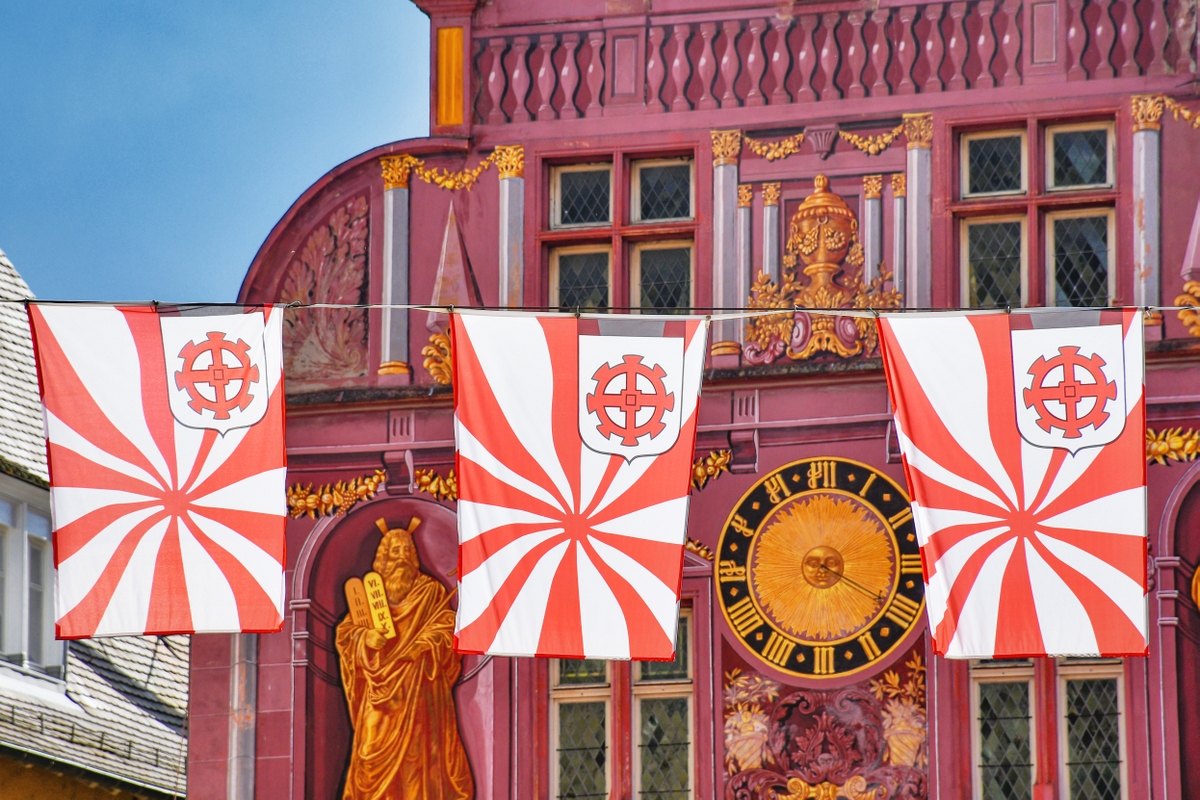
The Mulhouse flag representing the Mulhouse Wheel © French Moments
Since 1969, the building has housed the Mulhouse Historical Museum. Between historical documents and collections of paintings, you must admire the beautiful Council Chamber, in which the government of the Republic of Mulhouse met. Remember, the Republic was allied with the Swiss cantons, whose coats of arms can be seen here!
The second floor exhibits the history of Mulhouse from the 15th to the 18th century, based on a succession of major themes: the territory, institutions, justice, defence, religion..., but also guilds, craft work, bourgeois life, proto-industrialisation...
The gallery that spans the rue des Archives honours the reunion of Mulhouse with France in 1798.
The rear building deals with the 19th century and contemporary history. Popular traditions can be discovered with reconstructions: bedroom and kitchen from the Sundgau, the woodwork of the Mieg house, a space devoted to toys and marottes...
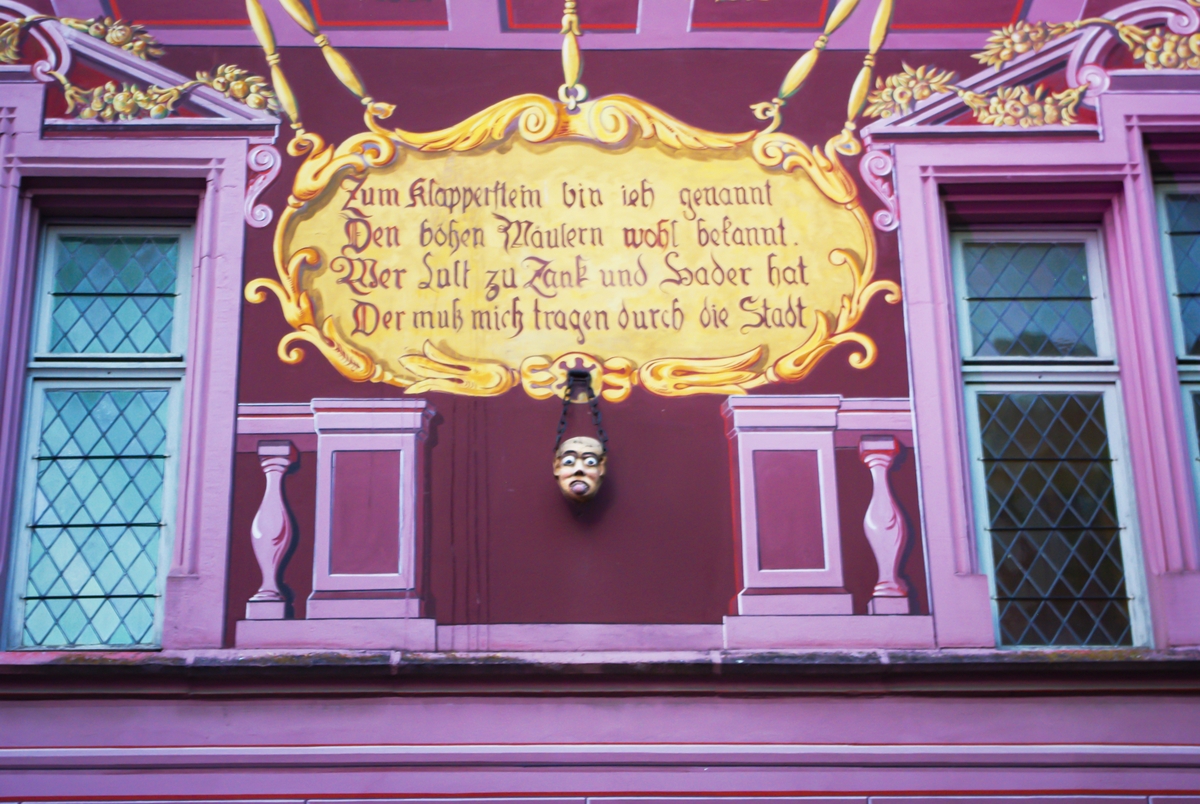
The Mulhouse Klapperstein on the façade of the former Hôtel de Ville © French Moments
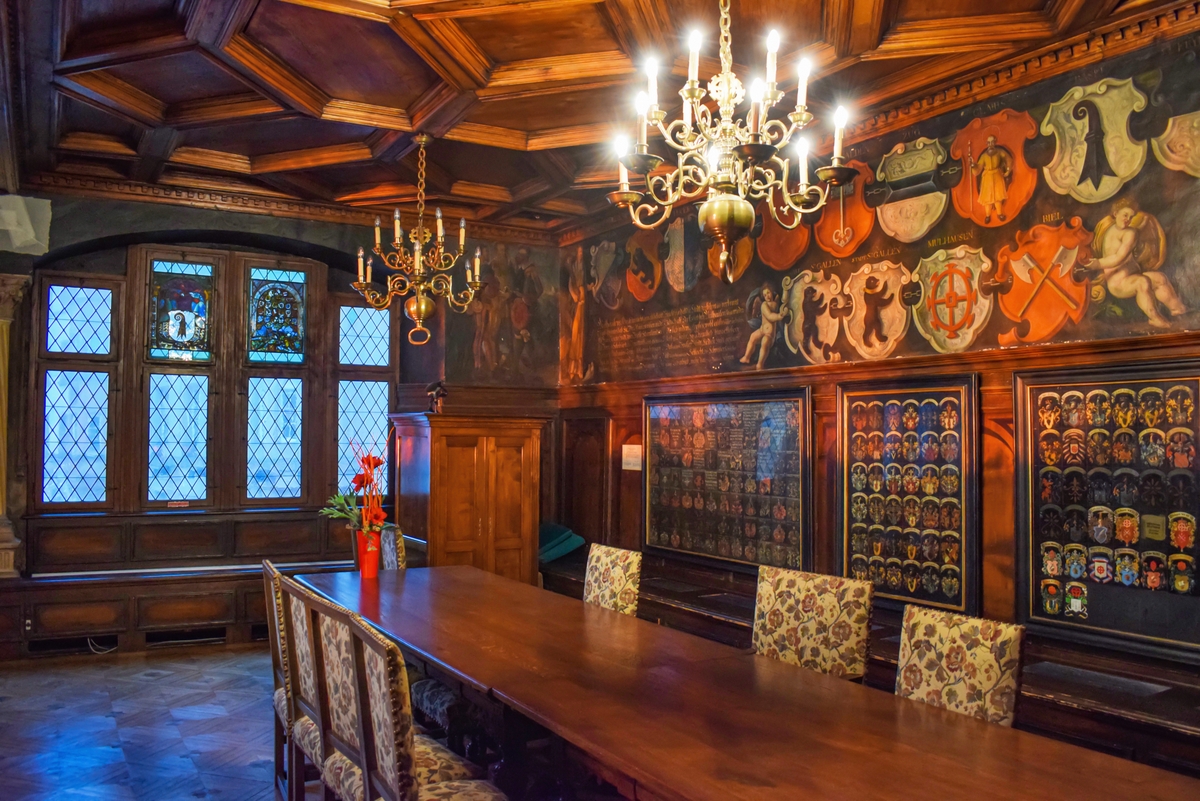
The Council's Room © French Moments

The seal of the City of Mulhouse © French Moments

Tip of a flagpole of a Mulhouse association (19th century) © French Moments

Stove from the Sundgau © French Moments

The Klapperstein of Mulhouse © French Moments

Status and regulations of the city of Mulhouse in 1740 © French Moments
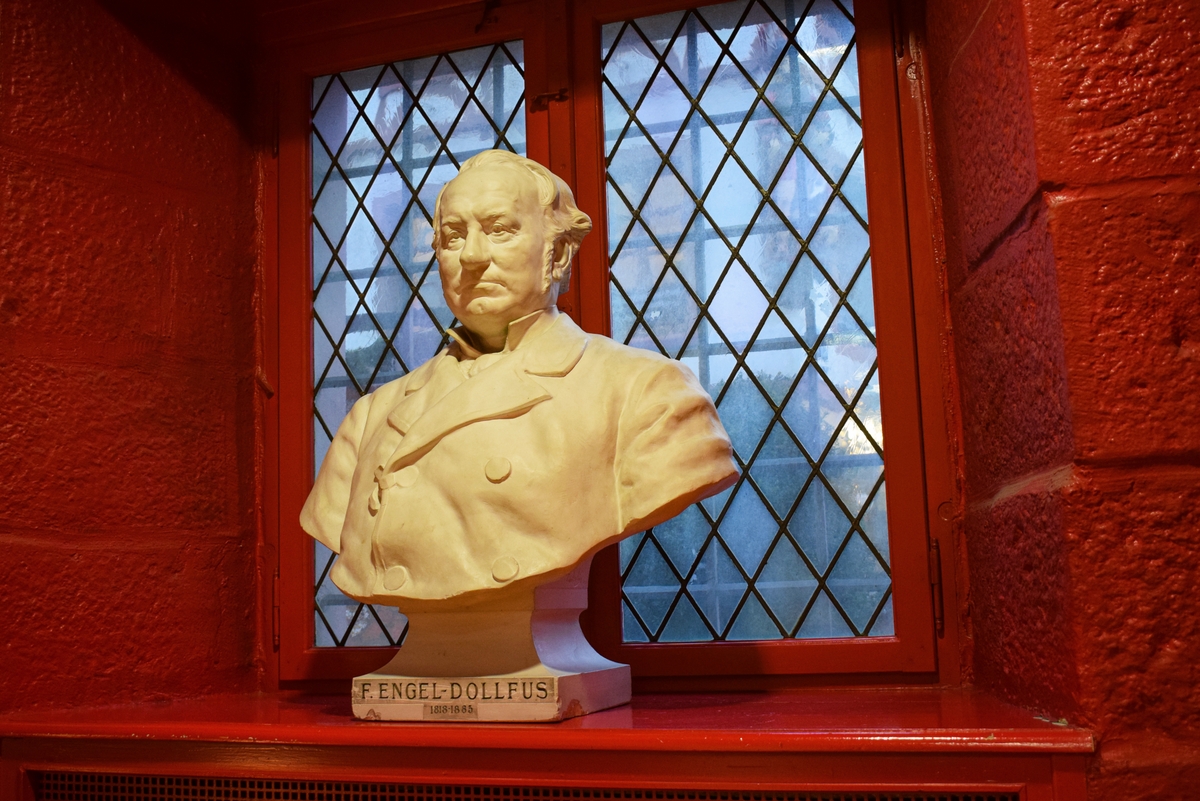
Bust of Engel Dollfus in the Mulhouse Historical Museum © French Moments
► Find out more: Official website of the Musée Historique
Fine Arts Museum
The Fine Arts Museum (Musée des Beaux-Arts) is perhaps one of the least known museums in Mulhouse.

The Musée des Beaux-Arts © French Moments
It occupies the Villa Steinbach, an 18th century building that is distinguished by its charm and elegance.
The very fine collection of this museum, which has been awarded the Musée de France label, owes its existence to the members of the Société Industrielle de Mulhouse (SIM).
The museum presents a collection of works of art from the 15th to the 20th century from the French, Flemish, Dutch, German and Italian schools.
Paintings from the years 1860-1914 are also on display, which is the highlight of the collection. It is a good place to observe and admire works by Jean-Jacques Henner, Brueghel le Jeune or William Bouguereau.

William Bouguereau, Flore et Zéphyr (by Ji-Elle, Public Domain)

Brueghel le Jeune, Scène de patinage 1613
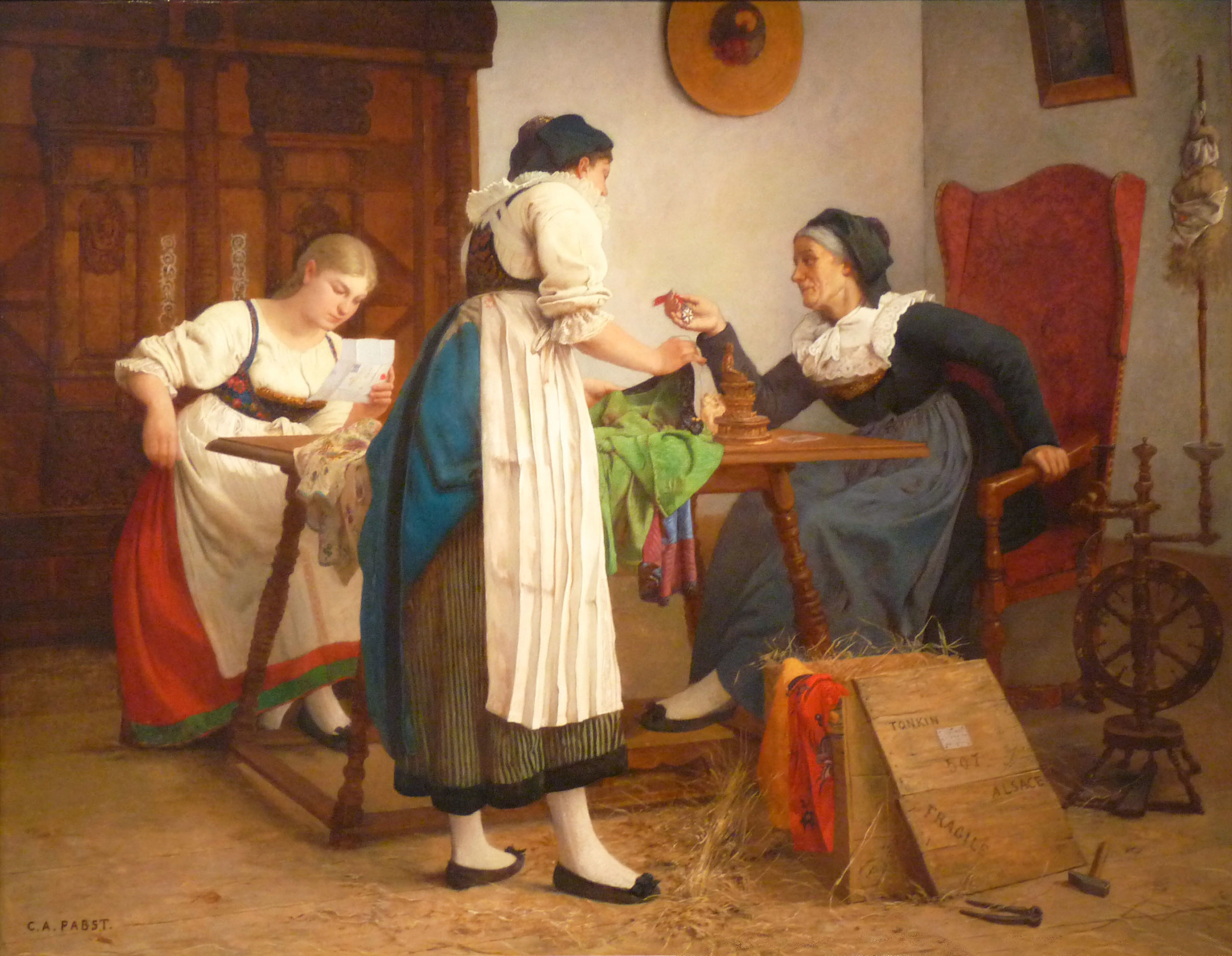
Camille Alfred Pabst, L'Envoi du Tonkin

Joseph Wencker, Sous la feuillée
► Find out more: Official website of the Musée des beaux-arts
Zoological and botanical park
Covering an area of 25 hectares, the zoological and botanical park of Mulhouse (Parc Zoologique et Botanique) ranks among the first parks of its kind in France.
The park is home to more than 900 animals of 170 species (some of which are in danger of extinction).
On 7 November 2016, the Mulhouse zoological park distinguished itself with the birth of a polar bear in captivity. Such an event is indeed very rare. Nanuq's cute face (that's her name!) has obviously contributed to the park's popularity.
And for the record, Nanuq left Mulhouse in April 2020 to settle in La Flèche zoo in the Sarthe region. There, she will start a family of her own!
The botanical garden contains 3500 varieties of plants and is classified as a Remarkable Garden of France by the Ministry of Culture.
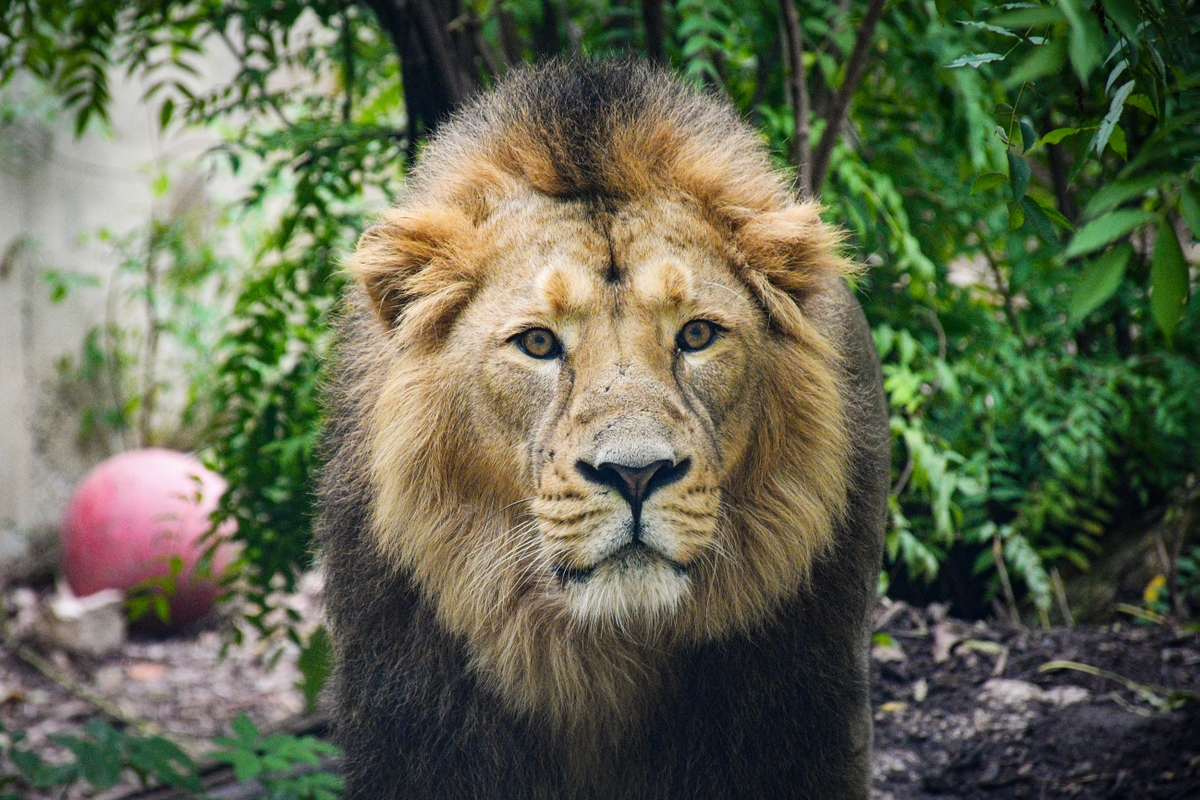
The lion © French Moments
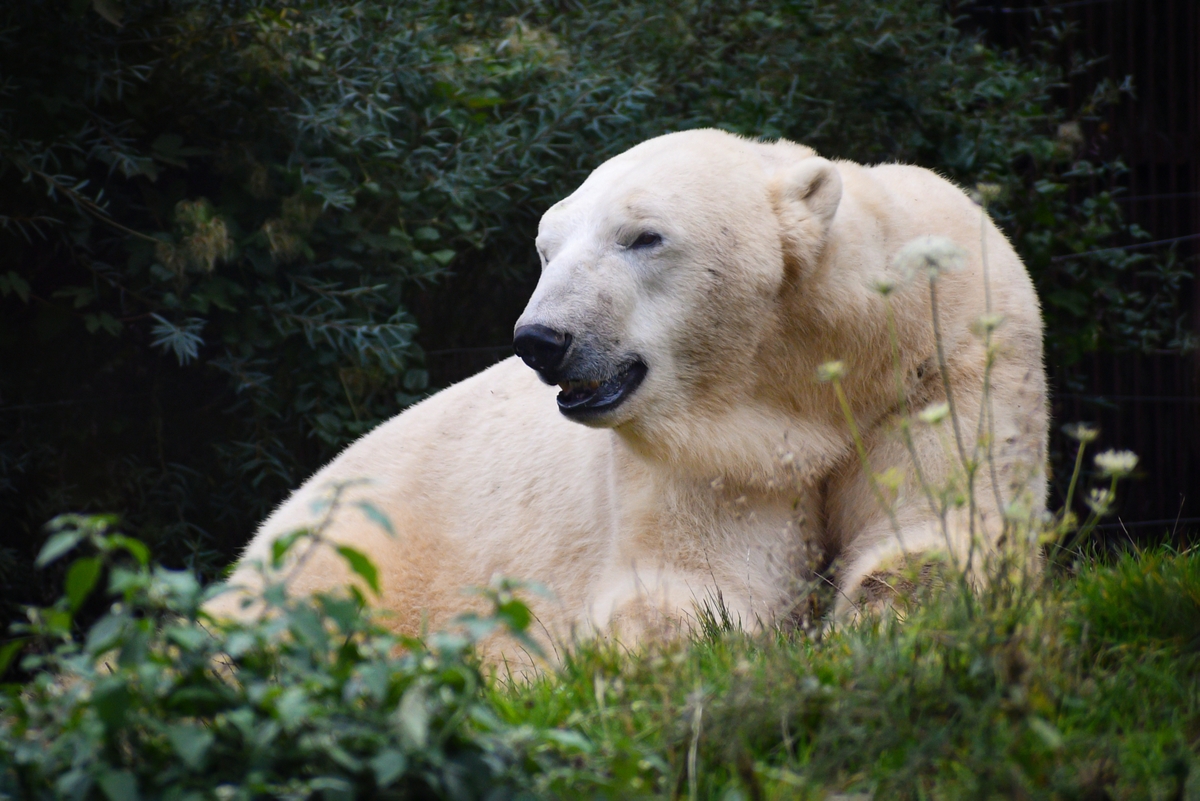
The polar bear © French Moments
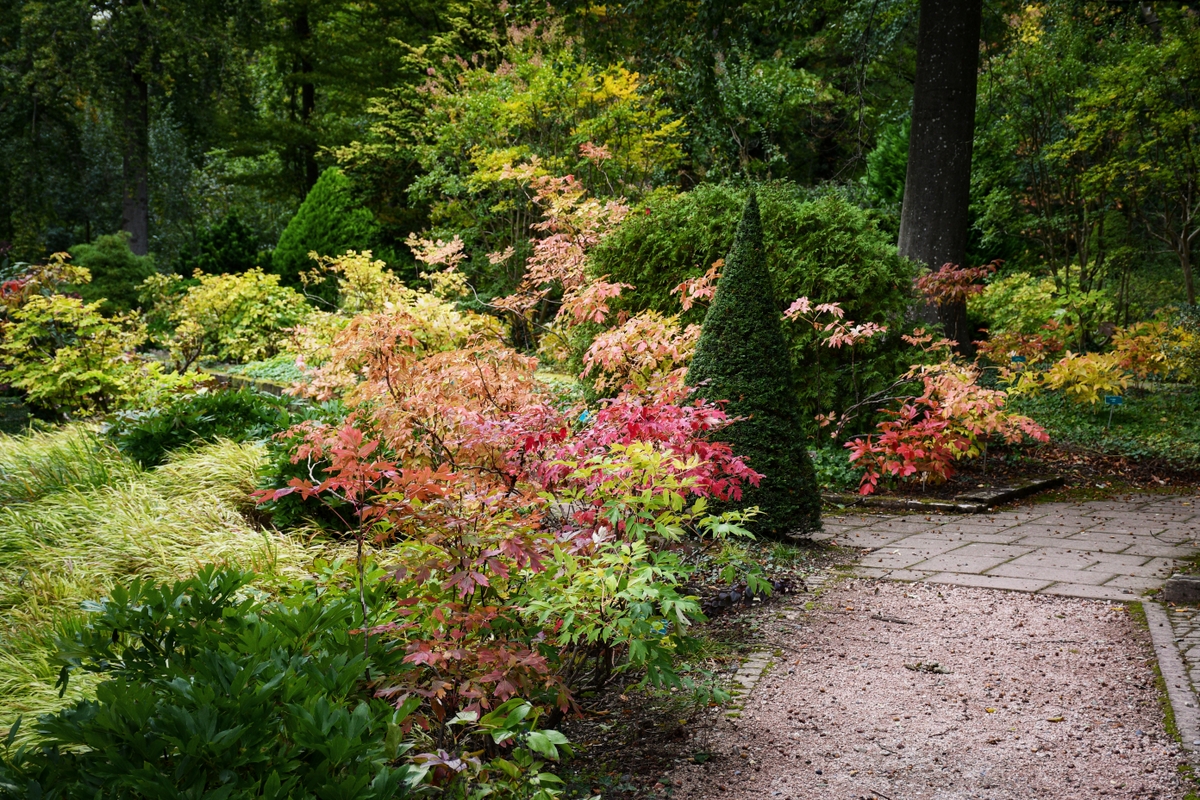
Autumn at the Parc Zoologique et Botanique in Mulhouse © French Moments
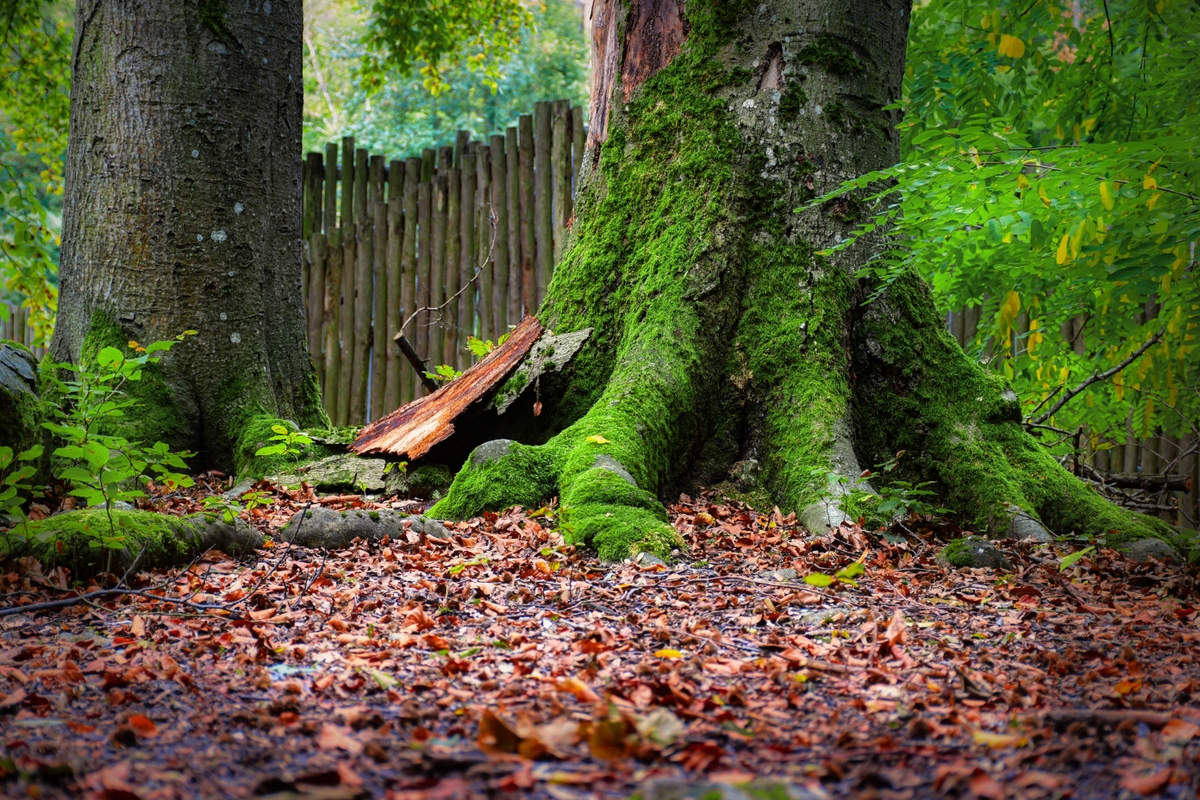
Parc Zoologique et Botanique, Mulhouse © French Moments

Parc Zoologique et Botanique, Mulhouse © OTC_BBuhrer
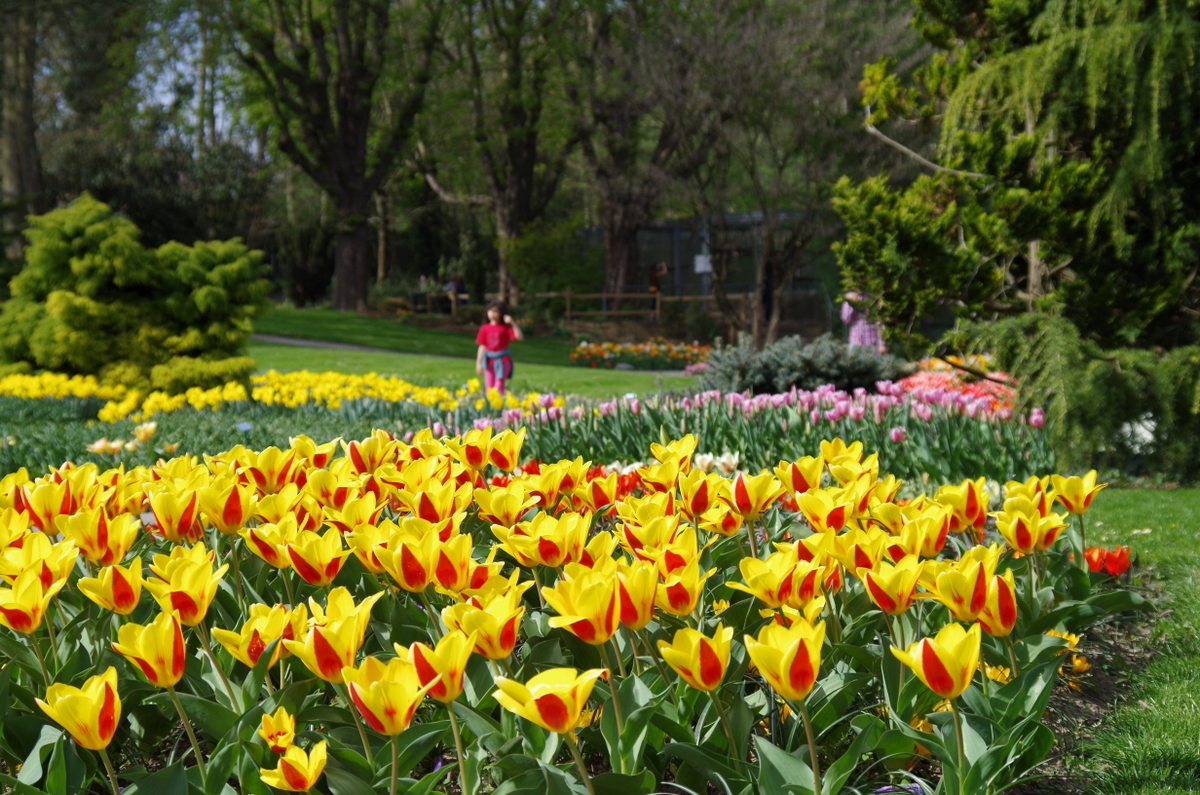
Spring at the Parc Zoologique et Botanique, Mulhouse © OTC_BBuhrer
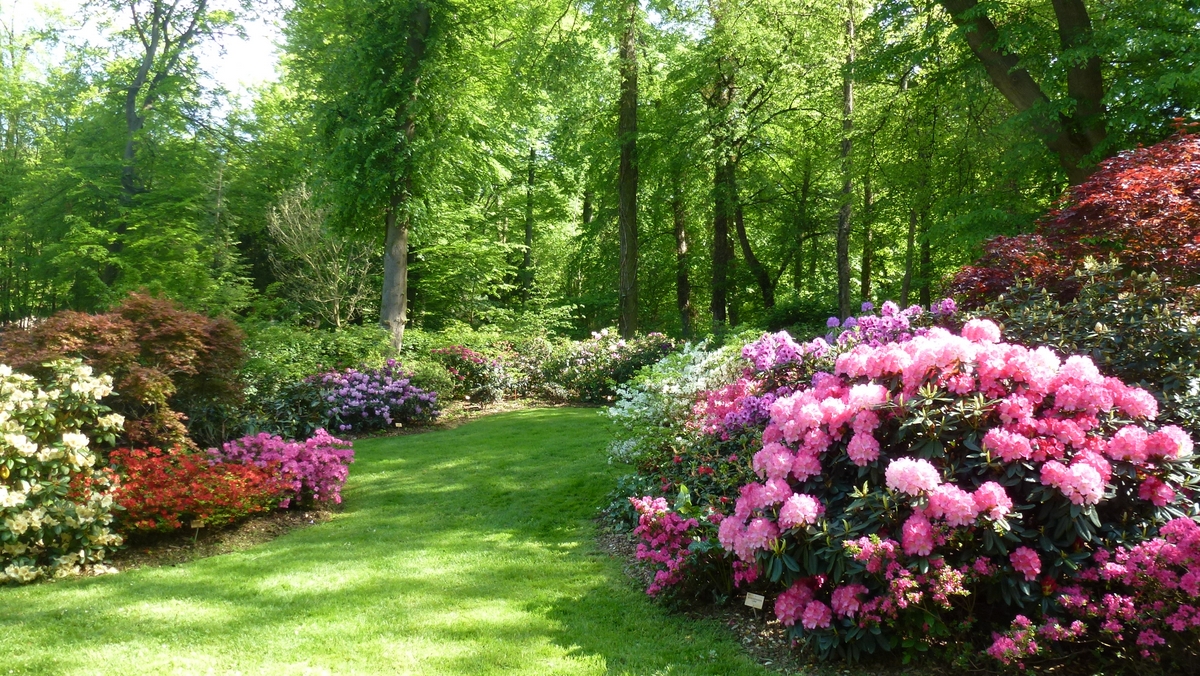
Parc Zoologique et Botanique, Mulhouse © OTC de Mulhouse et sa région
► Find out more: Official website of the Parc zoologique et botanique
Mining and Potash Museum
The mining and potash museum (musée de la mine et de la potasse) is located in Wittelsheim. This town is the birthplace of the discovery of the Alsatian potash deposit in 1904.
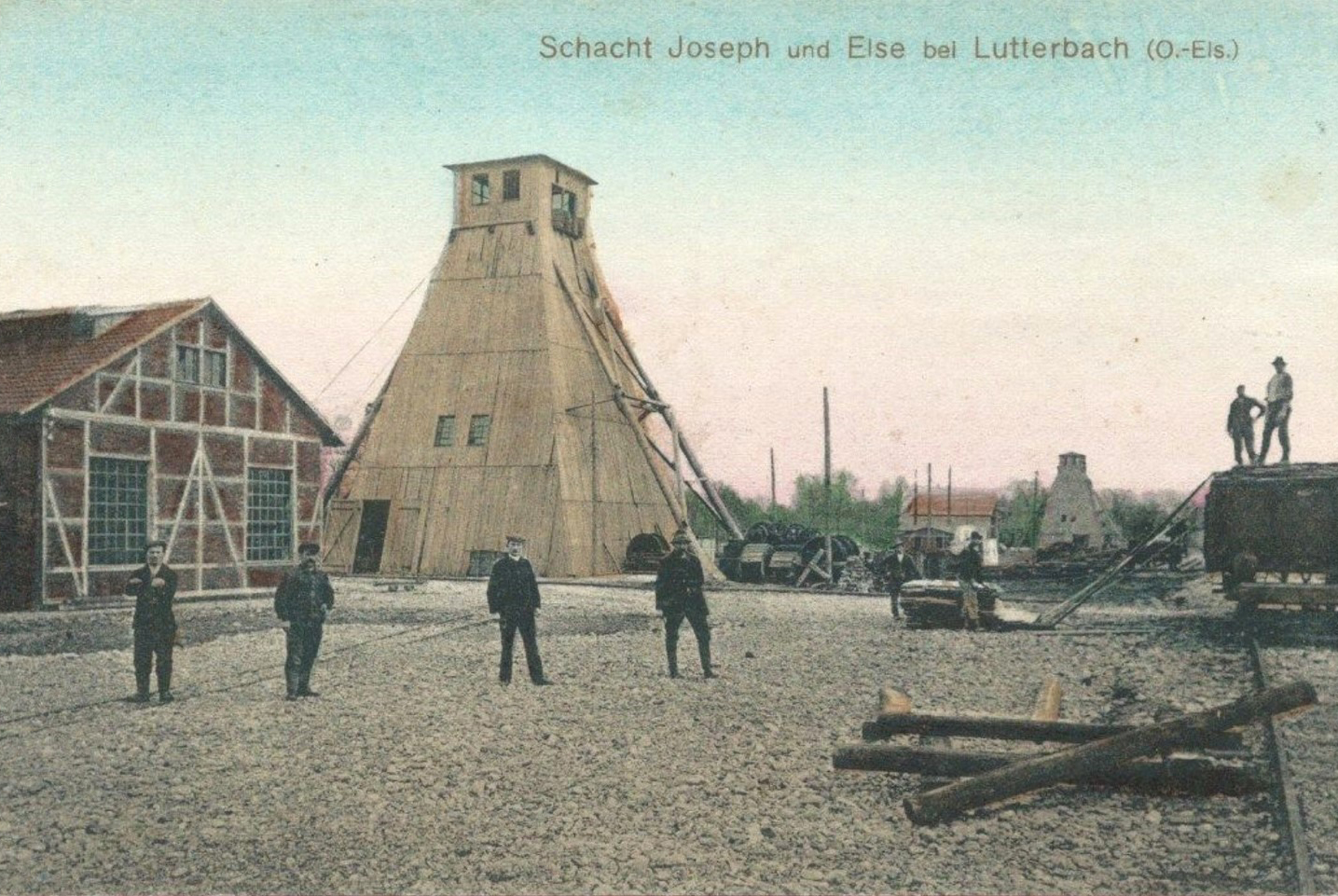
Joseph-Else pit (early 20e C) (Public Domain)
In this way, the museum brings to life the great potash epic in Alsace, when generations of miners went underground to extract the potash ore.
The museum itself occupies the former cloakroom of the Joseph-Else mine, named after the two shafts established there. The red brick buildings built in 1928 are evidence of the final face of the pit, which is still preserved in its entirety today.
![Wittelsheim Carreau Joseph Else 01 © Alain meier - licence [CC BY-SA 4.0] from Wikimedia Commons Musées de Mulhouse - Carreau Joseph Else © Alain meier - licence [CC BY-SA 4.0] from Wikimedia Commons](https://frenchmoments.eu/wp-content/uploads/2022/11/Wittelsheim-Carreau-Joseph-Else-01-©-Alain-meier-licence-CC-BY-SA-4.0-from-Wikimedia-Commons-scaled-1.jpg)
Wittelsheim : Carreau Joseph Else © Alain meier - licence [CC BY-SA 4.0] from Wikimedia Commons
![Wittelsheim Carreau Joseph Else 02 © Alain meier - licence [CC BY-SA 4.0] from Wikimedia Commons Musées de Mulhouse - Carreau Joseph Else © Alain meier - licence [CC BY-SA 4.0] from Wikimedia Commons](https://frenchmoments.eu/wp-content/uploads/2022/11/Wittelsheim-Carreau-Joseph-Else-02-©-Alain-meier-licence-CC-BY-SA-4.0-from-Wikimedia-Commons-scaled-1.jpg)
Carreau Joseph Else © Alain meier - licence [CC BY-SA 4.0] from Wikimedia Commons
![Wittelsheim Carreau Joseph Else 03 © Alain meier - licence [CC BY-SA 4.0] from Wikimedia Commons Musées de Mulhouse - Carreau Joseph Else © Alain meier - licence [CC BY-SA 4.0] from Wikimedia Commons](https://frenchmoments.eu/wp-content/uploads/2022/11/Wittelsheim-Carreau-Joseph-Else-03-©-Alain-meier-licence-CC-BY-SA-4.0-from-Wikimedia-Commons-scaled-1.jpg)
Carreau Joseph Else © Alain meier - licence [CC BY-SA 4.0] from Wikimedia Commons
![Wittelsheim Carreau Joseph Else 04 © Alain meier - licence [CC BY-SA 4.0] from Wikimedia Commons Musées de Mulhouse - Carreau Joseph Else © Alain meier - licence [CC BY-SA 4.0] from Wikimedia Commons](https://frenchmoments.eu/wp-content/uploads/2022/11/Wittelsheim-Carreau-Joseph-Else-04-©-Alain-meier-licence-CC-BY-SA-4.0-from-Wikimedia-Commons-scaled-1.jpg)
Wittelsheim: Carreau Joseph Else © Alain meier - licence [CC BY-SA 4.0] from Wikimedia Commons
► Find out more: Official website of the musée de la mine et de la potasse
Ecomusée of Alsace
The Ecomusée of Alsace (Écomusée d'Alsace) covers 15 hectares of land and includes 75 buildings representative of the whole of Alsace: half-timbered or stone houses, a town hall, a fortified tower, a school, a chapel, a railway station, as well as utility buildings such as barns, stables, drying sheds, smokehouses and a sawmill with its bucket wheel.
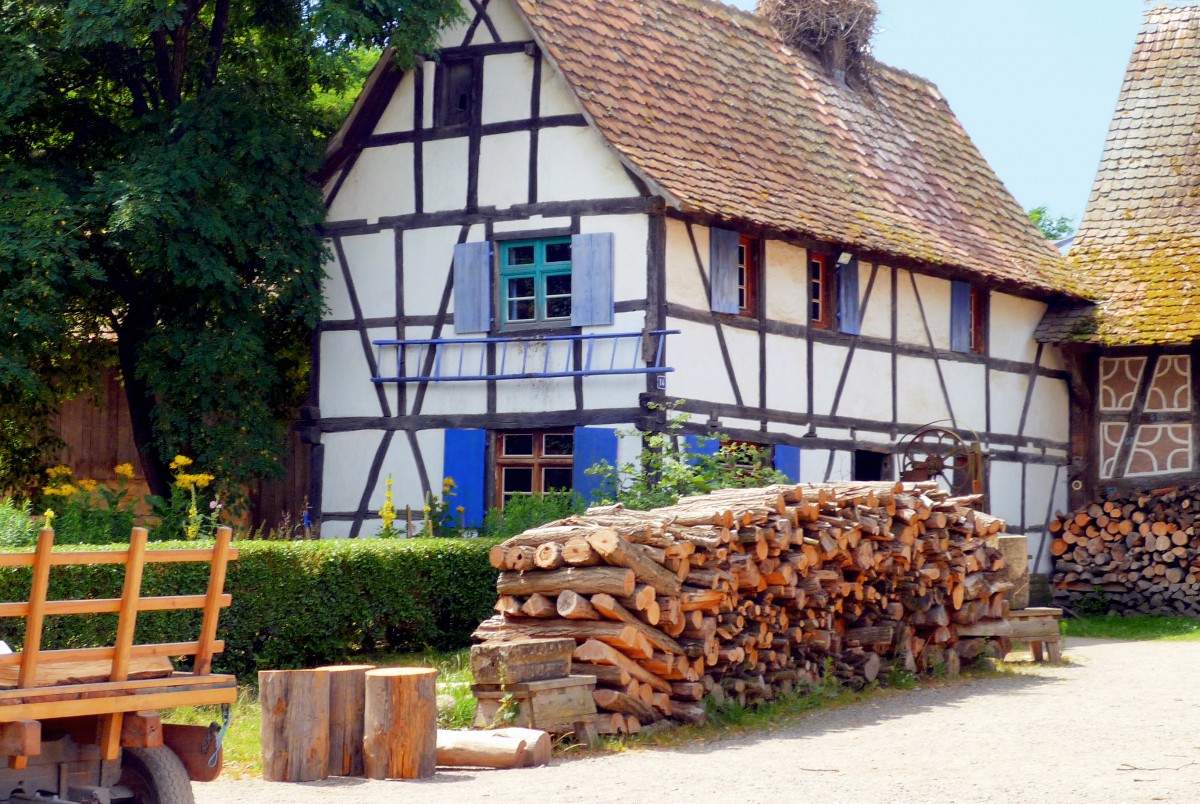
House from Buschwiller (clog maker) © French Moments
The houses in the Ecomusée come from all over Alsace. The village is made up of houses that were destined for destruction. The Écomusée selected them. The buildings were saved, dismantled and rebuilt on the present site.
Along the streets, you will be struck by the architectural diversity of the buildings: houses from the plains, vineyards, hills (Sundgau, Alsace Bossue) and mountains. Some of the houses have craftsmen at work performing traditional tasks with period tools.
Finally, at the Ecomusée, you can get up close to farm animals, which will delight children and adults alike: donkeys, horses, goats, pigs, roosters, turkeys, rabbits, sheep, geese, chickens, cows...
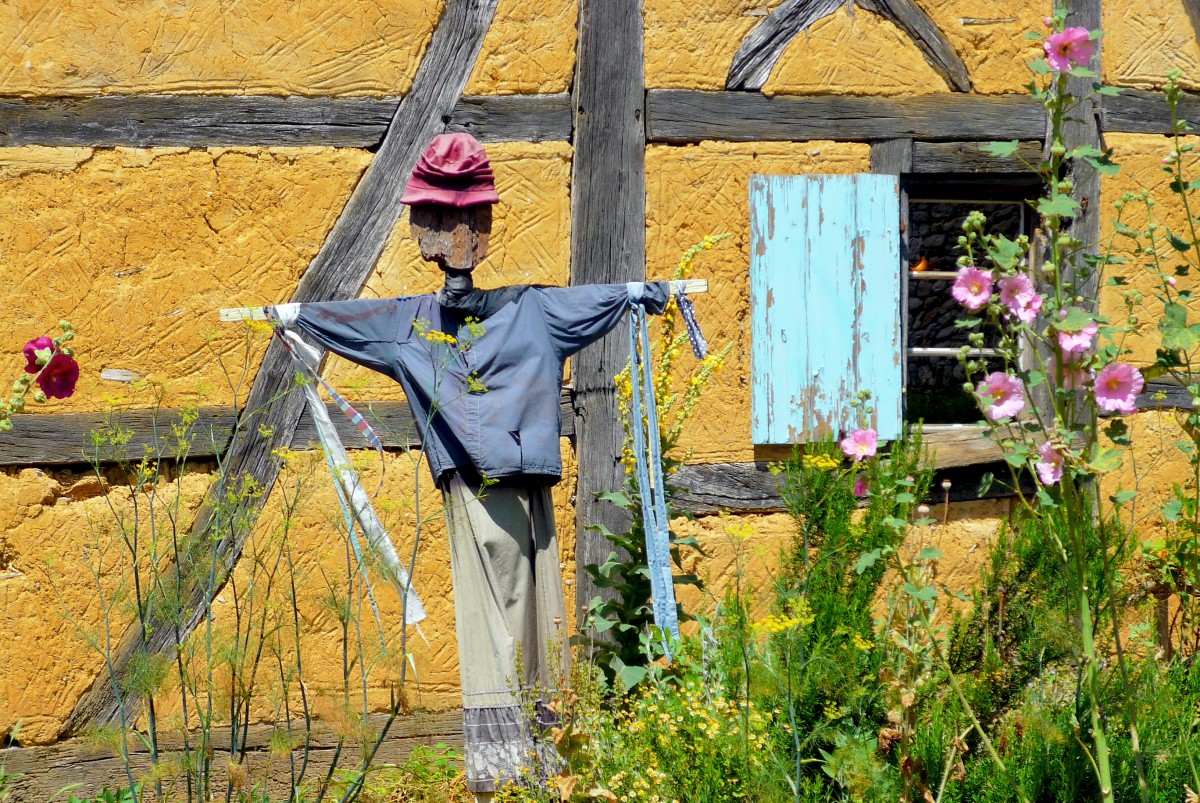
A charming scarecrow in front of the house from Gommersdorf© French Moments
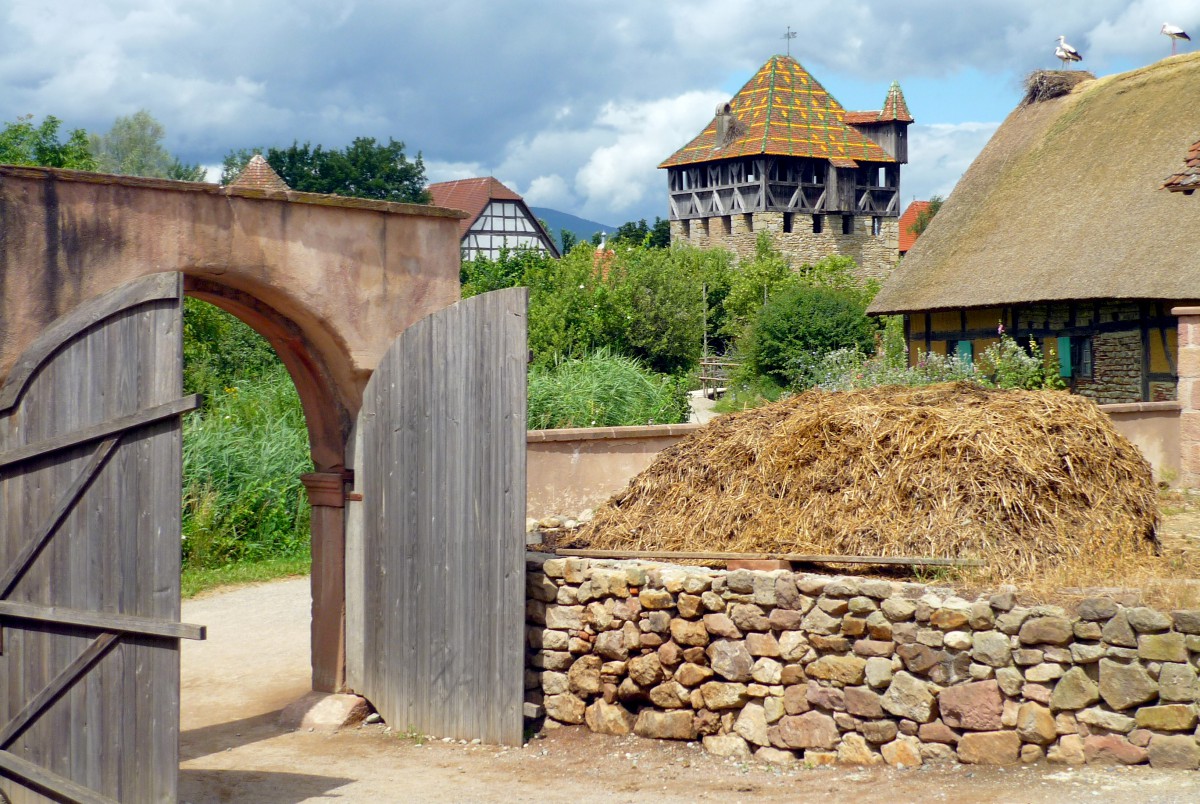
Inner courtyard of the Kochersberg © French Moments

The geese parade © French Moments
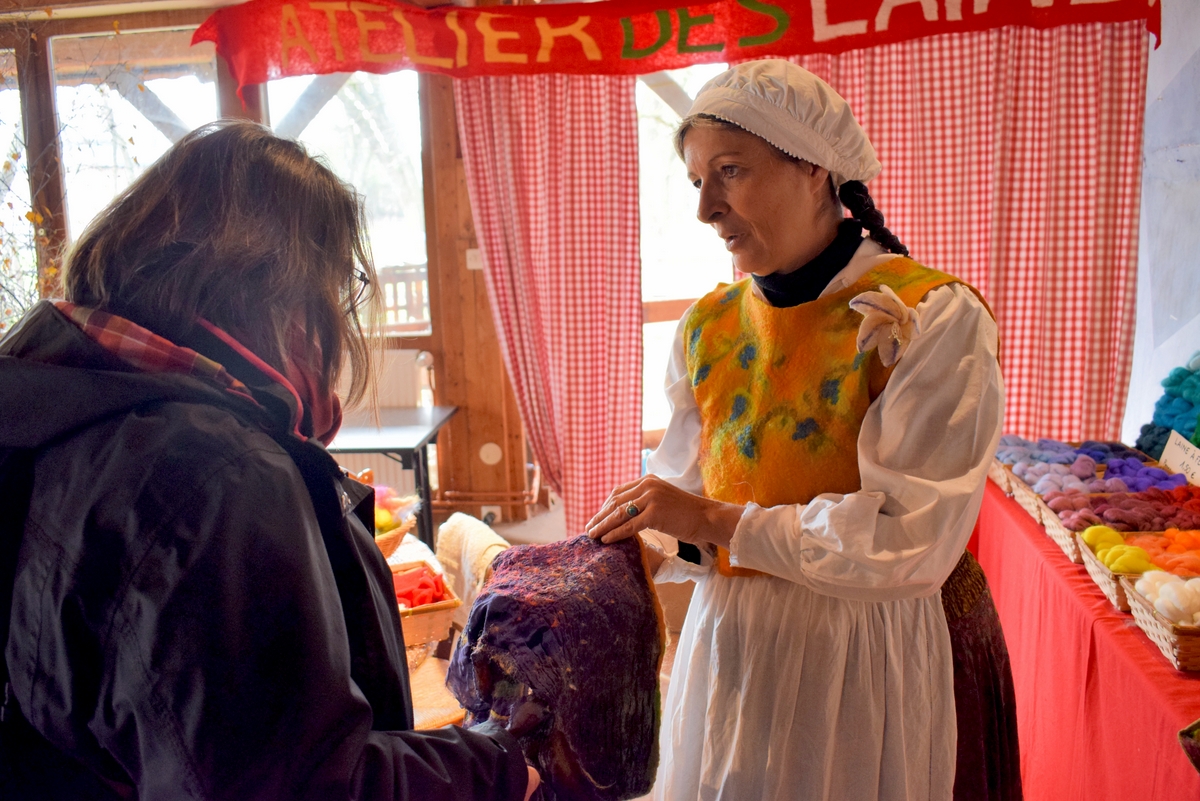
Wool workshop © French Moments
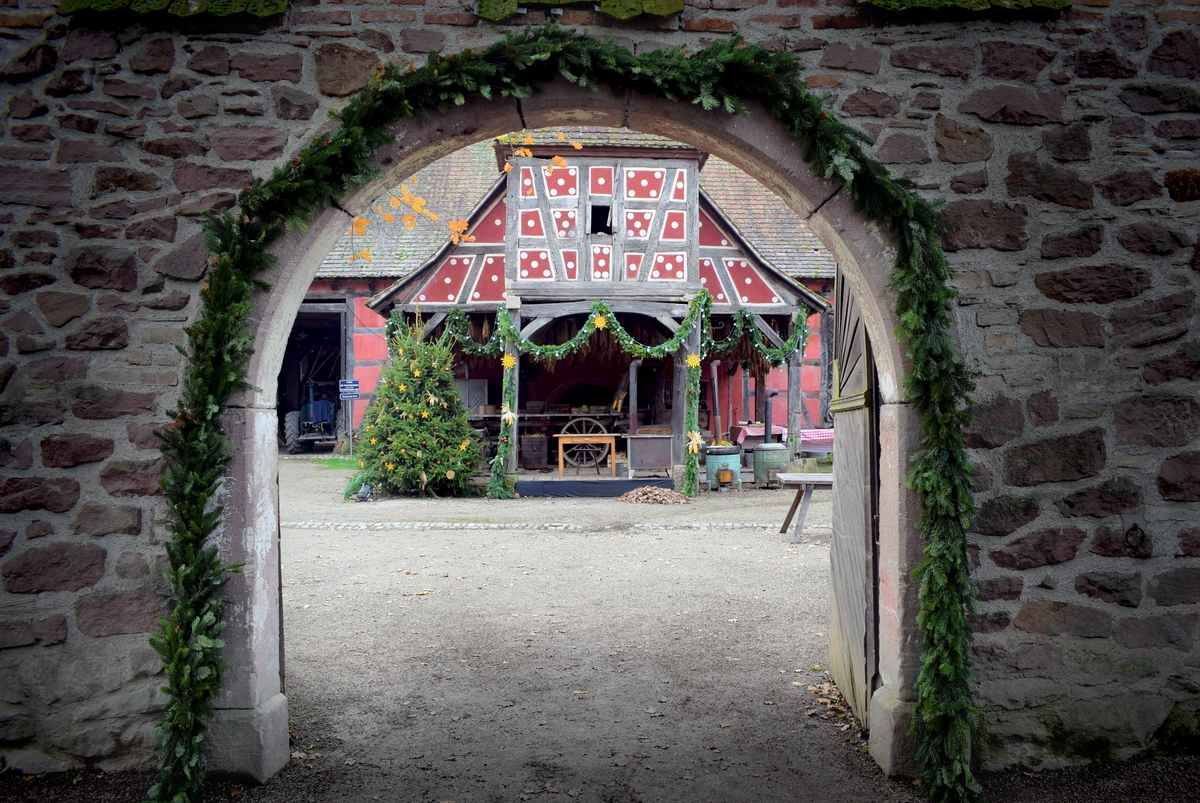
Christmas at the Écomusée d'Alsace © French Moments
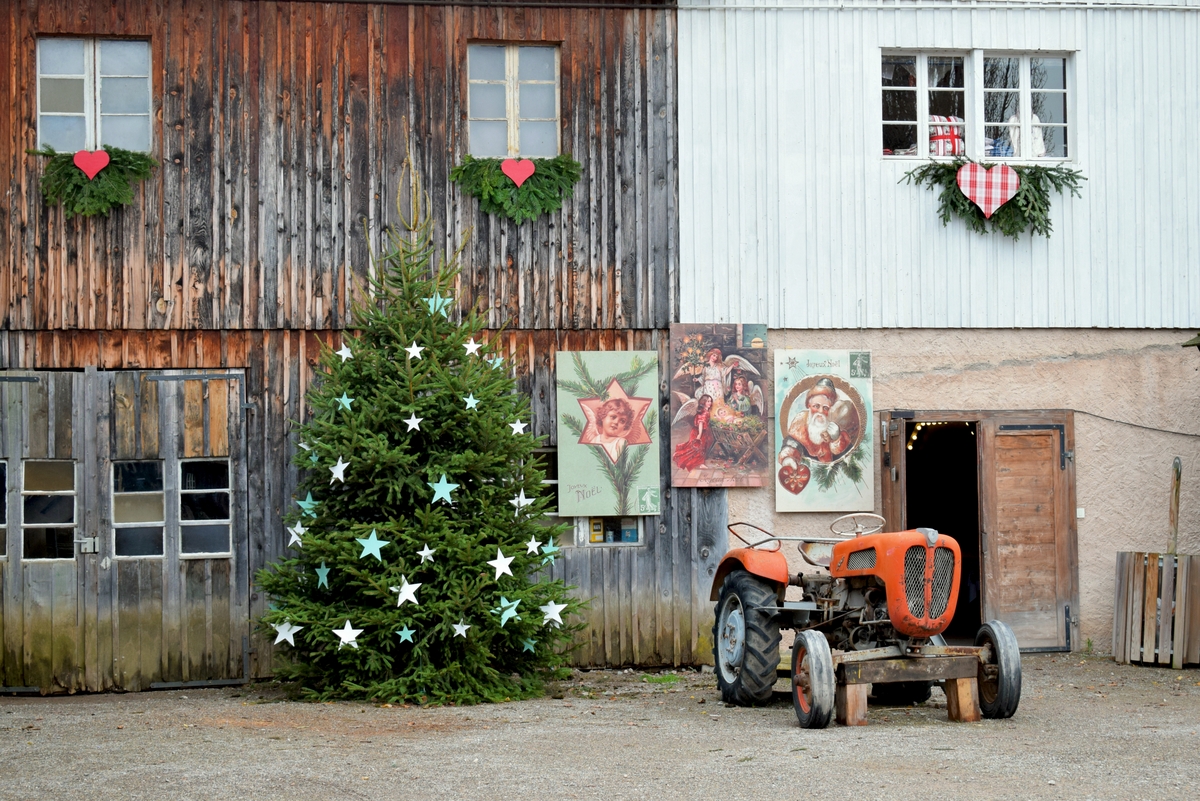
Christmas tree © French Moments
► Discover the Ecomusée d'Alsace on the blog
► Find out more: Official website of the Ecomusée d'Alsace
Other museums around Mulhouse
To discover in the region around Mulhouse :
- ALTKIRCH - the Sundgauvien museum is the museum of art and popular traditions of southern Alsace. More info...
- BASEL - the Swiss city is home to 40 museums covering 37 km2 including the Kunstmuseum Basel, the oldest public art collection in the world. All the museums in Basel...
- BELFORT - the city of the Lion invites its visitors to discover the historical museum in the Citadel. All the museums in Belfort...
- COLMAR - north of Mulhouse, the picturesque Alsatian city is famous for its Unterlinden museum. All the museums in Colmar...
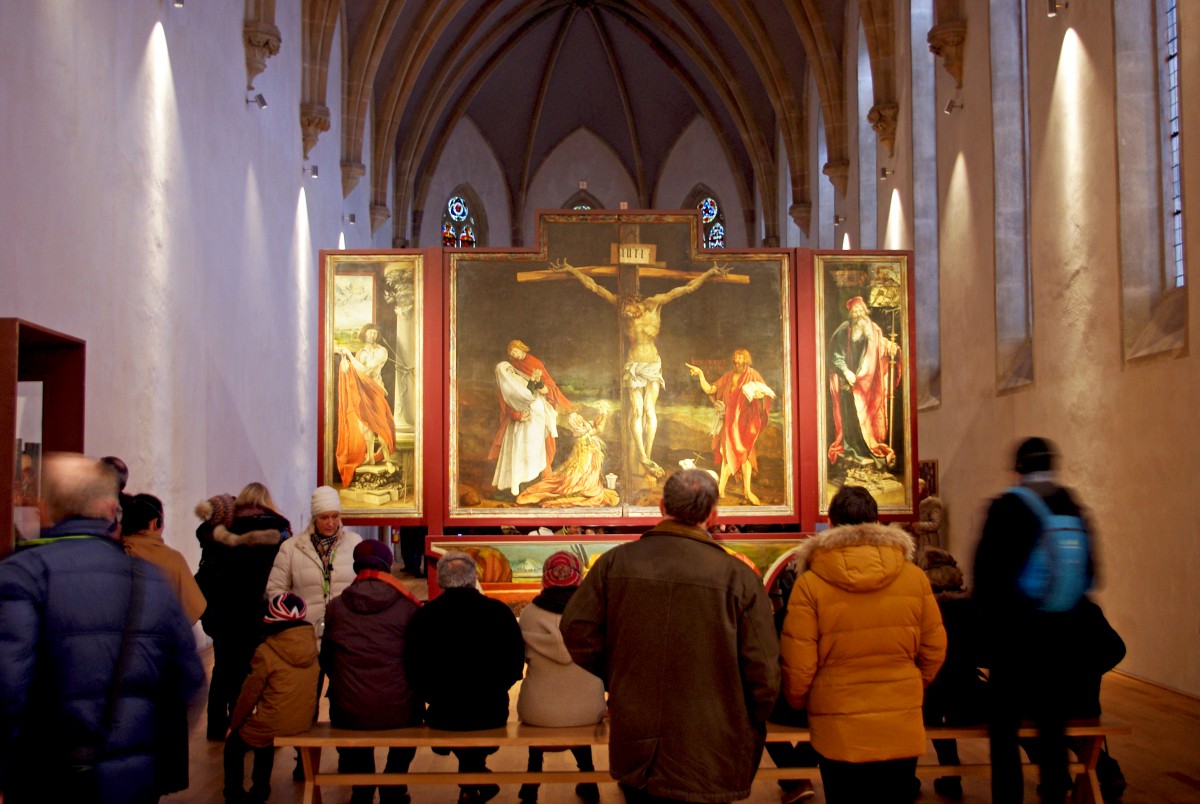
Le retable d'Issenheim au musée Unterlinden de Colmar © French Moments
Practical Mulhouse
Things to do in Mulhouse
To discover Mulhouse, here is a good plan! Get the Mulhouse City-Pass which includes :
One museum or site of your choice for free
- All other sites at a reduced rate
- free public transport + shuttle bus to the Little Prince Park and the Alsace Ecomuseum
- Discount at the tourist office shop
- Reduced entrance fees for shows, concerts, cinema and leisure activities (swimming pools, tourist train, etc.)
- Special price for car rental
- A free guided tour of the cityPour découvrir Mulhouse, voici un bon plan !
Staying in Mulhouse
During my trip to Mulhouse, I stayed in a very comfortable hotel located in the heart of the city: the Maison Hôtel Mulhouse-Centre. Its location is ideal: in no time at all, I was on the Place de la Réunion, the historical epicentre of the city.
The hotel occupies a modern building with 70 rooms with all the comforts expected from an establishment of its category.
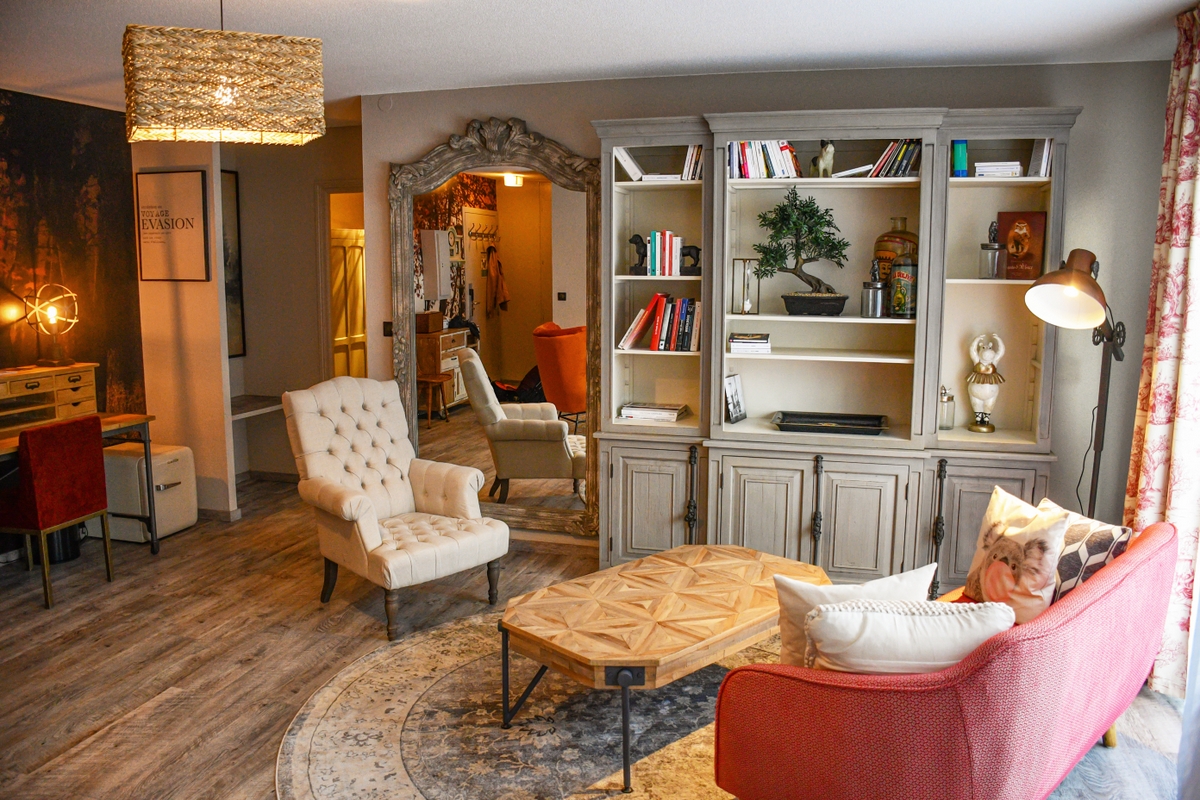
Le salon, Maison Hôtel Mulhouse Centre © French Moments
My room (loft suite "escapade champêtre") had a neat design with a warm decoration.

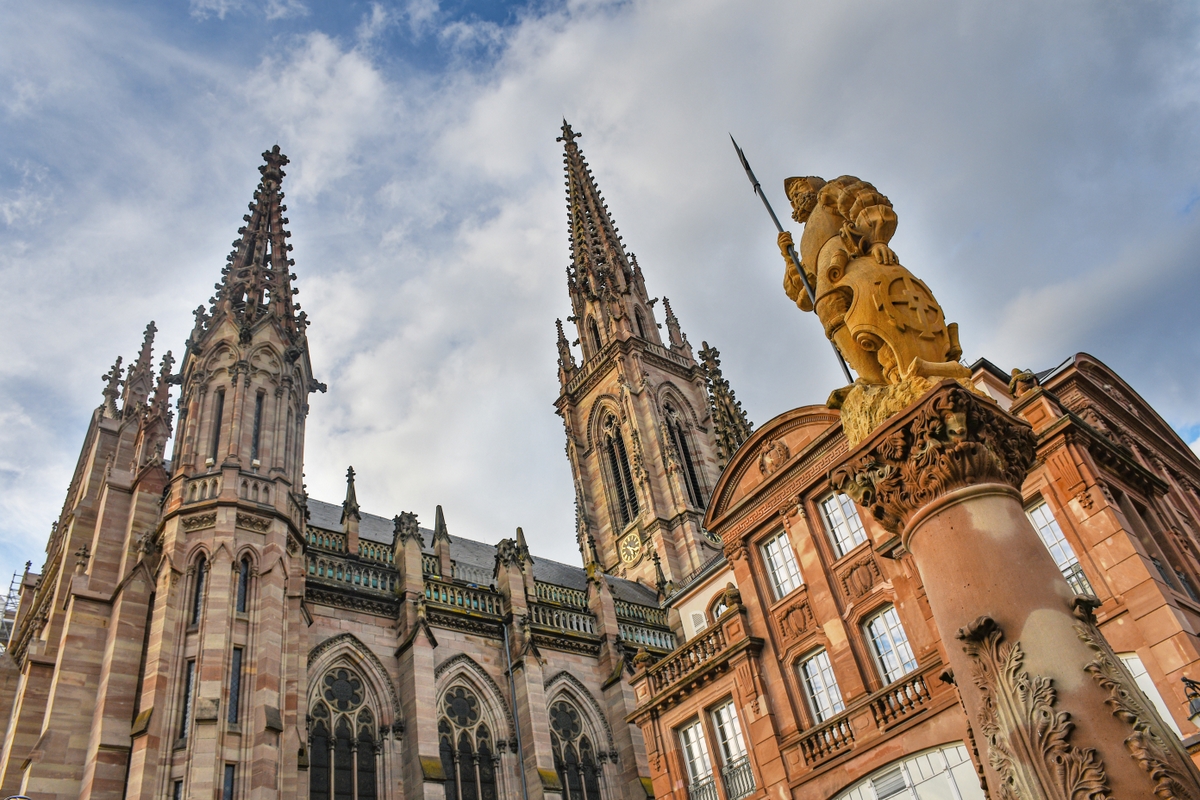

The hearty breakfast consisted of a buffet with a wide range of sweet and savoury products.
>> Book your room at the Maison Hôtel Mulhouse Centre.
Looking for other accommodation in Mulhouse? Click here for a list of hotels or browse the map below:
Find out more
- Discover the surprising old town of Mulhouse on the blog
- Read this page in French on our blog Mon Grand-Est
- The official website of the museums Mulhouse
- The website of the Mulhouse Tourist Board
The museums in Mulhouse on Pinterest
Pin on Pinterest to remember the most beautiful museums in Mulhouse!






